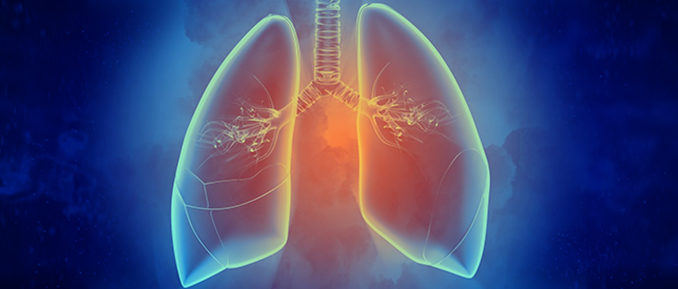
Breathing can be difficult for millions of people around the world who have COPD. While there are available treatments that can reduce the symptoms of this condition, one major barrier to their effectiveness is corticosteroid resistance. The mechanisms that contribute to this type of resistance are unknown, but recent evidence suggests that certain epigenetic factors may play a role.
COPD (or chronic obstructive pulmonary disease) is a term used to describe progressive lung diseases including chronic bronchitis and emphysema. Long-term exposures to irritants that damage the lungs contribute to COPD, and smoking is considered the leading cause. According to the World Health Organization, 65 million people globally have this condition, and it accounts for around 5% of all deaths. There is no cure for COPD and, unlike other lung diseases, it takes years to develop and mostly affects older adults.
In a new study published in the Chinese Medical Journal, scientists have found that an antimicrobial peptide could improve the therapeutic effects of budesonide, a commonly prescribed corticosteroid for COPD. It works by increasing the expression and activity of histone deacetylase 2 (HDAC2) – an epigenetic enzyme critical for anti-inflammatory activity.
HDACs act as epigenetic erasers that remove the acetyl group from histone proteins on DNA. They influence the structure of chromatin to become more compact, repressing transcription to the gene. HDACs are known to play a critical role in many biological processes including inflammation, cell proliferation, apoptosis, and carcinogenesis. Therefore, HDAC inhibitors are actively being pursued as potential therapeutics.
Recently, HDAC2 has become an attractive target for glucocorticoid sensitivity restoration. Previous research has shown that oxidative stress and abnormal inflammation in the lungs can lower this enzyme’s activity. Plus, irritants such as tobacco smoke have been shown to induce oxidative stress and promote glucocorticoid resistance in COPD models with reduced HDAC2 expression. Low dose theophylline and curcumin are current therapies used to restore HDAC2 function. They’ve had success in improving steroid use in COPD, but as with many drugs, there are some limitations.
In the current study, the team investigated the peptide known as cathelicidin LL-37, which is naturally found in the human body and is an essential molecule involved in innate immunity against invading microbes. In addition to its direct antibacterial properties, LL-37 can also reduce inflammation brought on by infection by inhibiting the actions of the JNK and Akt signal pathways while decreasing pro-inflammatory cytokine levels.
The team used a rat model for COPD to determine this peptide’s effectiveness for restoring corticosteroid sensitivity and for examining HDAC2’s role. They tested both the LL-37 and budesonide treatments alone and in combination, then compared these groups with a control group. Inflammatory levels and HDAC2 activity in the rat lungs were analyzed using commercial assays.
Overall, the results showed that LL-37 combined with the budesonide increased HDAC2 expression and improved lung tissue damage. The researchers also recognized that the COPD rats had increased PI3Kδ/Akt activity. Other treatments, like those mentioned above, can also restore HDAC2 by selectively inhibiting PI3Kδ. So, it’s possible that the activation of this signaling pathway might be responsible for the dysfunctional HDAC2 expression.
As well, the authors noted that some prior analysis regarding LL-37 involvement in the pathogenesis of COPD disagreed with their results. However, they stated, “Although there were also some contradictory reports, these data suggested that the role of LL-37 and its regulation in COPD was a complicated process, especially in patients with the advanced stage of COPD.”
Although more research is needed to support the results found in this study, the data does indicate a possible role for LL-37 in the treatment of steroid-resistant COPD. Furthermore, it highlights the importance of identifying epigenetic marks, like HDAC2, associated with inflammatory diseases to determine if correcting those marks will have any therapeutic effect. Future work in this area will hopefully lead to the development of clinical applications for COPD steroid resistance.
Reference: Weng JZ, Wang Y, Sun TY. Cathelicidin LL-37 restoring glucocorticoid function in smoking and lipopolysaccharide-induced airway inflammation in rats. Chinese Medical Journal. March 2019.

